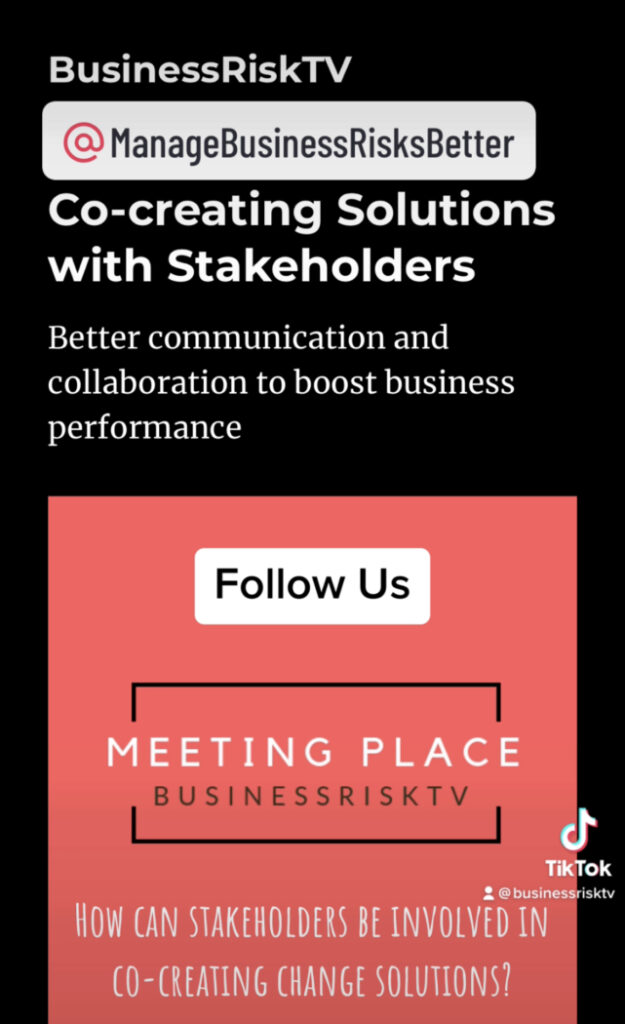Co-creation is a process where stakeholders work together to create solutions that meet their collective needs. It is a collaborative approach to problem-solving that emphasises the importance of including all stakeholders in the process of finding and implementing solutions. Co-creation involves listening to different perspectives, brainstorming ideas, and building consensus around the best approach. Co-creation can be an effective way to solve complex problems and create positive change in communities, organisations, and industries. In this article, we will explore how stakeholders can be involved in co-creating change solutions.
Who are stakeholders?
Stakeholders are individuals or groups who have an interest or stake in the outcome of a decision or action. In the context of co-creation, stakeholders can be any person or group who is affected by a problem or who can contribute to its solution. Stakeholders can include customers, employees, suppliers, investors, government agencies, non-profit organisations, and the community at large. Each stakeholder has a unique perspective, experience, and expertise that can contribute to the co-creation process.
Why involve stakeholders in co-creation?
Involving stakeholders in co-creation has several benefits. First, it can increase the quality of solutions by incorporating a diverse range of perspectives and ideas. When stakeholders are involved in the co-creation process, they can share their experiences, knowledge, and expertise to help identify problems and develop solutions. This can lead to more innovative and effective solutions that better meet the needs of all stakeholders.
Second, involving stakeholders in co-creation can increase stakeholder buy-in and ownership of solutions. When stakeholders are involved in the co-creation process, they are more likely to feel invested in the solutions that are developed. This can increase their willingness to support and implement the solutions, which can lead to greater success in achieving the desired outcomes.
Third, involving stakeholders in co-creation can increase transparency and accountability. When stakeholders are involved in the co-creation process, they can provide feedback on the decision-making process and hold decision-makers accountable for the decisions that are made. This can help ensure that decisions are made in the best interests of all stakeholders and that the process is fair and equitable.
How to involve stakeholders in co-creation?
- Identify stakeholders
The first step in involving stakeholders in co-creation is to identify who they are. This involves identifying all the individuals and groups who are affected by the problem or who can contribute to the solution. Stakeholders can be identified through stakeholder mapping, which involves creating a visual representation of all the stakeholders involved in a particular project or issue. Stakeholder mapping can help to identify key stakeholders and their relationships with each other, which can inform the co-creation process.
- Engage stakeholders
The next step is to engage stakeholders in the co-creation process. This involves communicating with stakeholders about the problem, the co-creation process, and their role in the process. Communication can take many forms, including meetings, workshops, surveys, and social media. The key is to use communication channels that are appropriate for the stakeholders and that allow for two-way communication.
- Define the problem
The third step is to define the problem that needs to be solved. This involves identifying the root causes of the problem and the desired outcomes. Defining the problem is a critical step in the co-creation process, as it provides a common understanding of the problem and the goals that need to be achieved. Stakeholders should be involved in defining the problem, as they can provide valuable insights into the problem and its impact on them.
- Brainstorm solutions
Once the problem has been defined, the next step is to brainstorm solutions. This involves generating a wide range of ideas that could potentially solve the problem. Brainstorming can be done individually or in groups, and can be done in person or virtually. The key is to encourage creativity and collaboration among stakeholders. During the brainstorming phase, stakeholders should be encouraged to think outside the box and consider a range of possible solutions.
- Evaluate solutions
After generating a list of potential solutions, the next step is to evaluate them. This involves assessing the feasibility, impact, and effectiveness of each solution. Stakeholders should be involved in the evaluation process, as they can provide valuable input on the potential benefits and drawbacks of each solution. It is important to evaluate solutions based on the criteria that were established during the problem definition phase.
- Co-create solutions
The next step is to co-create solutions. This involves selecting one or more solutions and working together to develop a plan for implementation. Co-creation can involve stakeholders from different sectors and organisations, as well as individuals with different expertise and experiences. The co-creation process should be collaborative and iterative, with stakeholders working together to refine and improve the solutions.
- Implement solutions
Once solutions have been co-created, the next step is to implement them. This involves putting the plan into action and monitoring progress towards achieving the desired outcomes. Stakeholders should be involved in the implementation process, as they can provide valuable feedback on the effectiveness of the solutions and identify any areas that need improvement.
- Evaluate and iterate
The final step in the co-creation process is to evaluate and iterate the solutions. This involves assessing the impact of the solutions and identifying opportunities for improvement. Stakeholders should be involved in the evaluation and iteration process, as they can provide valuable insights into the effectiveness of the solutions and identify any areas that need to be improved.
Involving stakeholders in co-creating change solutions is a powerful approach to problem-solving that can lead to innovative and effective solutions. By listening to different perspectives, brainstorming ideas, and building consensus around the best approach, stakeholders can work together to create solutions that meet their collective needs. Co-creation can increase the quality of solutions, increase stakeholder buy-in and ownership, and increase transparency and accountability. By following the steps outlined in this article, organisations and communities can involve stakeholders in co-creating change solutions and achieve positive outcomes that benefit all stakeholders.

More business risk management articles videos and business reviews
Co-creating Solutions with Stakeholders

